VENICE is a unique and exceptional city. A collection of marble palaces, scenic canals and practical bridges. A city of reflecting images, a delicious medley of land and sea, water and stone. A city built on mud flats, in the middle of a huge delta. A city at the mercy of it’s watery environment and the ominous influence of the Adriatic Sea.
VENICE IN THE NEWS – Almost every day there is an article in the newspapers about Venice. Too many tourists, too many cruise ships, too many souvenir shops. The questions are always the same; should we limit the number of visitors, should an entry fee be charged to visit the city, should cruise ships be banned from the lagoon? There’s always heated debate on both sides of the argument. If we take a historical perspective, it has always been the case that Venice has attracted numerous visitors. In medieval times Venice was the maritime capital of the eastern Mediterranean. Merchant ships sailed to and from Venice to Greece, Turkey, North Africa and Egypt. By the 17th century Venice ruled a sprawling and diverse territory that included the Dalmatian Coast (now Croatia), Crete and Corfu and briefly Constantinople. Every day of the week ships arrived in the lagoon of Venice to sell and buy goods. Ships queued at the ‘Punta Dogana’ Customs Point at the entrance to the Grand Canal, to pay their dues and unload their cargoes. Silks and spices, precious gems, gold and silver, mahogany and marble poured into the port.
PEOPLE too arrived in their hundreds, looking for work, new opportunities and the chance to share in Venice’s wealth. The Jewish community huddled around the old ‘gettare’ metal foundry. The neighbourhood became known as the ‘ghetto’ because of its proximity to the factory. This is the first known use of the word ‘ghetto’ to mean a densely populated area filled with people of common ethnic and religious backgrounds. There were other migrant communities too; Greek, Albanian, Turkish and Armenian. All eager to settle in Venice and create a new home. The Greek community clustered around the Church of San Giorgio dei Greci, to this day still a Greek Orthodox Church. Venice has always been a cosmopolitan city, an international city, a city of trade. Later the British, Germans and French arrived each adopting the city as their own. Joseph Smith, British Consul in Venice made the city his home and set himself up as an art dealer, supporting and assisting the artist Antonio Canaletto. Napoleon declared St Mark’s Square, ‘the finest drawing room in Europe’ and then stole many of the city’s treasures which he carted off to The Louvre in Paris. During the Second World War German officers hoped and prayed that they would be stationed in Venice. They loved Venice’s beauty and elegance. The orchestras playing in St Mark’s Square and the superb coffee!
DID YOU KNOW that the term ‘Quarantine’ originated in Venice. Quaranta means forty in Italian. Several of the islands in the lagoon were used as ‘Quarantine’ centres. Visiting ships would be held there for forty days to ensure that the crew and vessel were clean and healthy (untarnished by plague) before being allowed into the city. Despite such precautions Venice was decimated by plague on several occasions. Several of these islands remained as hospital islands, sanatoria and even a leper colony until the 20th century. Although in recent times they’ve been turned into luxury hotels. It’s ironic and amusing to think that the San Clemente Palace, now a luxury hotel, was previously a large hospital, deliberately isolated in the middle of the lagoon to avoid contagious diseases from spreading to the heart of Venice.

VENICE has always been a popular destination, a magnet for traders, merchants and migrants in search of a better life. A centre of business and a hub of trade, activity and opportunity. No different from the port cities of Liverpool, London or New York. In the 1970s the Venetians complained about the day trippers coming into Venice, from nearby seaside resorts, armed with their packed lunches and their plastic macs (in case of rain). They’d visit St Mark’s Square and a Venetian glass factory and then leave. They didn’t spend any money in the city moaned the Venetians. Later the Eastern Europeans arrived, by coach, again just for the day. Again the Venetians complained. More recently it is the cruise ships, many cruises start and finish in Venice. The passengers throng the narrow streets of Venice, filling the shops, bars and restaurants. Is this a bad thing? We’d need to ask the Venetian Chamber of Commerce that question. It is certainly nothing new.
RESPECT VENICE – for the last few decades I have worked as a tour guide in and around Venice. For me as a regular visitor I am constantly delighted and enchanted to discover something new in the labyrinth of small streets and hidden corners of the city. In April I experienced the Fish Market and Fruit & Vegetable Market in the springtime. The Adriatic Sea had just burst into life after the cold winter months. The stalls were overflowing with clams, crabs and tiny fish, fresh from local waters. The islands of the lagoon had delivered their first harvest of the year too. The famous purple artichokes of Sant’Erasmo filled baskets and trays, with their unique colour and aroma. Venetians will tell you that the ‘carciofi’ of Sant’Erasmo are unique. They grow on the island of Sant’Erasmo just ten minute from Venice. The saline nature of the soil gives these early vegetables a particular and distinctive flavour. They are so tender they can be eaten raw. I prefer them lightly steamed with just a few drops of olive oil. The market buzzes with activity as enthusiastic shoppers select the day’s best and freshest produce. The earlier you arrive, the better the choice. Chefs and locals will be there at 8 o’clock in the morning and will be sipping espresso coffee in the local bars by nine.

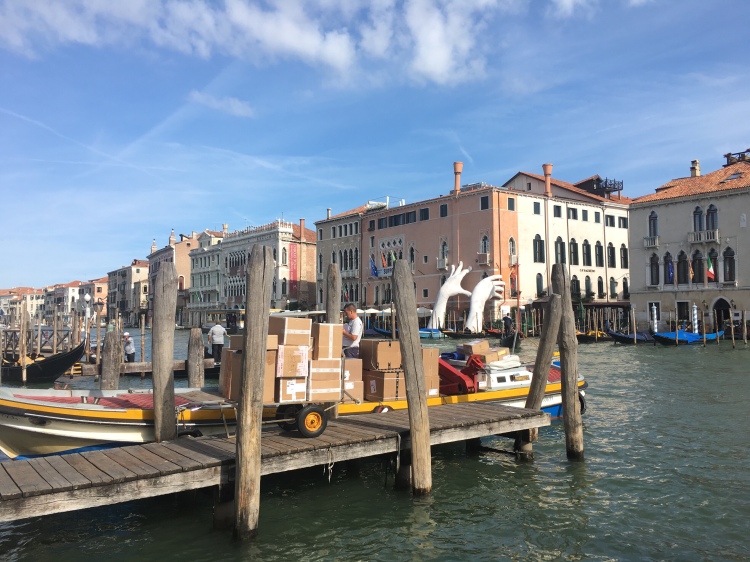
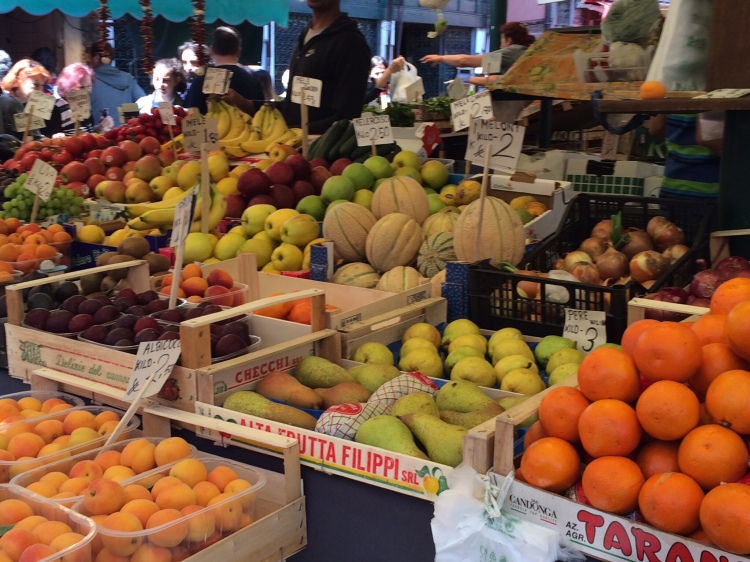



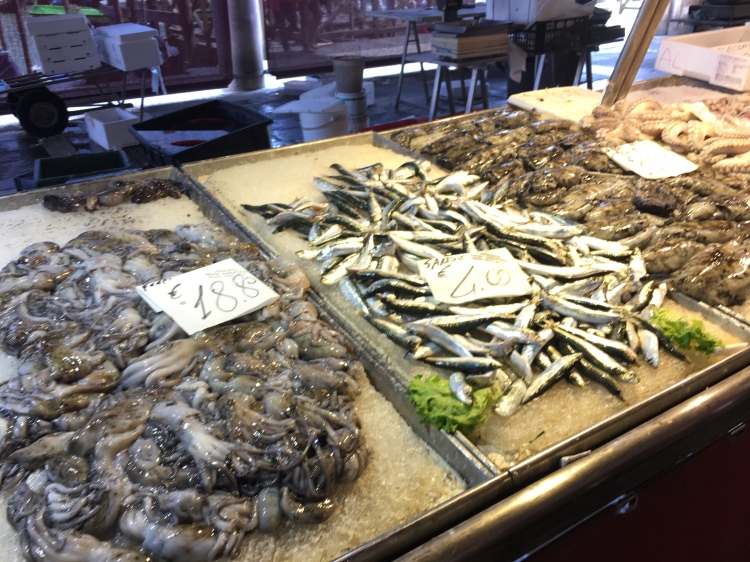
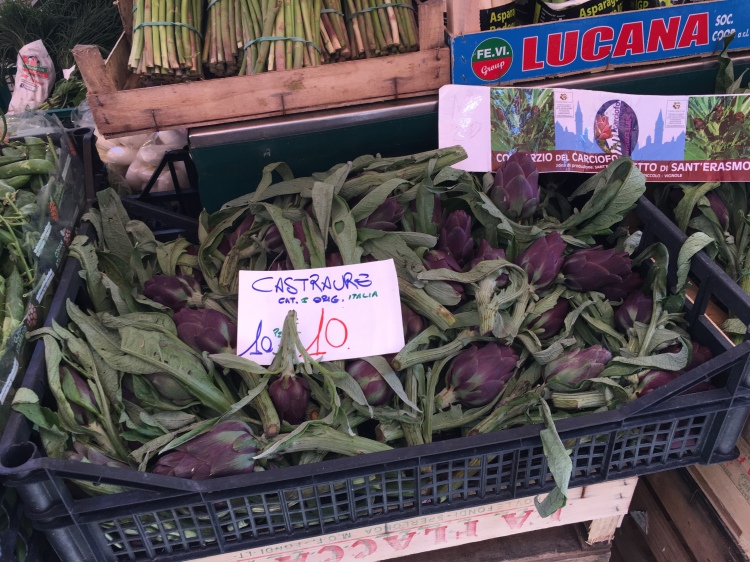



LET’S REALLY APPRECIATE VENICE – it’s fun to start at the top. Take the vaporetto over to Isola San Giorgio and take the lift to the top of the Bell Tower. From here the views are completely breath-taking. The city of Venice to the north, the lagoon to west and east, and to the south the island of Lido di Venezia. From this vantage point it is possible to understand and appreciate the size of the lagoon of Venice. It is huge – almost 80 kms from north to south and about 20 kms from west to east. It is the result of at least five rivers making their way from the Italian Alps out into the Adriatic Sea, an extensive, complicated and ever-changing delta of mud flats, channels and marshes. A shimmering, watery hinterland that is neither land nor sea but a dynamic confluence of the two. A constantly evolving environment that has been changed and modified by man since Roman times. A unique place that should be treasured and respected.
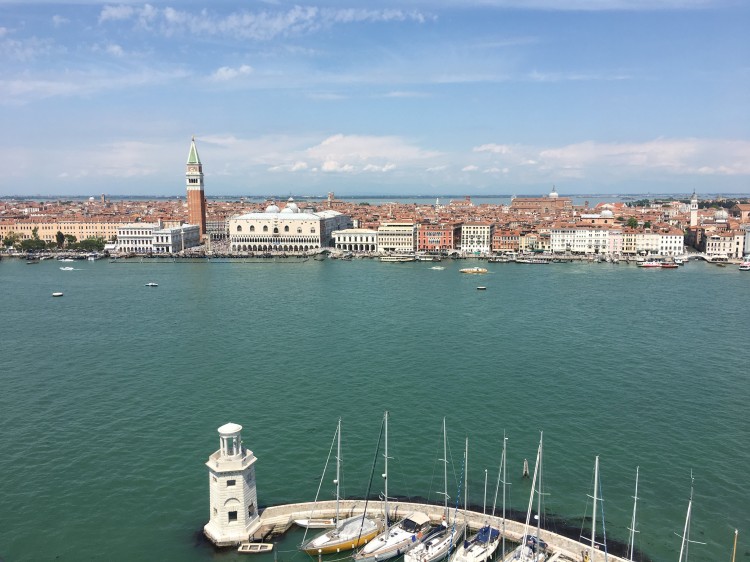




RESPECT VENICE – the Venetians have always been, and continue to be innovators. In the back streets of Castello is the colourful shoe shop where Giovanna Zanella designs and makes shoes. Each pair perfectly fitted to the individual customer’s feet. I had a pair made five years ago – I love them and they are still going strong. Giovanna draws the outline of your foot on a piece of paper, then takes numerous measurements of width, depth and height of instep, heel, toes, to ensure a comfortable fit. I chose a pair of lace-up, Mary Poppins style shoes with black heels and contrasting dark green and light green suede for the main body of the shoe. Giovanna is successful, the shop is often busy, people come from near and far to order a pair of custom shoes. Businesses like Giovanna’s are important in Venice, she gives work to local people, she rents a shop, she is putting Venice on the map as a city of artisan producers. It is important to support these small, independent enterprises.
MEANWHILE back at Rialto there’s a shop selling clothing for gondoliers. Seriously, that’s all they sell, tee shirts, jackets, fleeces, hats, for the best dressed gondolier in town. The shop is beautifully fitted out with light wood floors and miscellaneous bits of gondola boat and pole decorating the space. The service and the quality of the goods is top notch. This shop is unique to Venice and is a ‘must visit’ for visitors. Treat yourself to a little piece of Venice to take home and once again you are supporting the local economy and keeping Venice real. The business is called: Emilio Ceccato and is located at the base of the Rialto Bridge on the San Polo side of the Grand Canal.
Further east in Castello, one of the most residential ‘sestieri‘ (neighbourhoods) of Venice is a wonderful small, women’s clothing shop called Bancalotto. Bancalotto is a social enterprise programme. They sell clothing designed and made by women prisoners held in the Women’s Prison of Venice, located on the island of Giudecca. What a great idea, the women held in the prison are given the opportunity to use their skills of dress-making to make skirts, dresses and coats available to buy. Last time I was in Venice I went to have a look, the clothes are simple and stylish. Quite 1950s in their cut and look. Next time I’m there I’ll make a purchase. The name of the shop is a play on words. Bancarotta means bankrupt in Italian – Bancolotto implies the luck of winning the lottery (lotto) to improve your finances and monetary situation (banco). Given that the women making the clothes are incarcerated the name Bancolotto is most appropriate. Again, this is a fantastic business idea and one that needs to be supported by visitors to Venice.
VENICE is a living city with a permanent population of residents. During the summer months the volume of tourists in the city, especially on the main route from Rialto Bridge to San Marco can be difficult to negotiate. It’s important for visitors to honour the city of Venice, support local businesses and to treat the city itself with respect. Buy from independent local shops, explore the quieter areas of the city. See and enjoy Venice with eyes wide open. Visitors, myself included, must appreciate and be grateful for the opportunity to explore and enjoy this magnificent watery paradise.
This is a unique and exceptional place. It is our duty to enjoy Venice, appreciate Venice and come back to explore La Serenissima again. We must support, honour and respect Venice now and for the next generation. It’s a vital and important part of our culture and heritage, a unique city to be treasured and enjoyed both now and in the future.
Notes:
Venice is a unique city, discover more by reading the following articles written by ‘The Educated Traveller’ over the last five years:
- The Shoe Maker of Venice
- For stories about the Lagoon of Venice – Torcello – Island of legends – Locanda Cipriani, Hemingway and Venice
- How to see magnificent panoramas of Venice – Venice – A day on the water
- Why not work on your Italian!
- Some detail (in Italian) on the origins of the Jewish ghetto in Venice:
L’area dove sorse più tardi il quartiere ebraico era denominata “Ghetto” almeno dagli inizi del XIV secolo, poiché vi si trovavano le fonderie pubbliche per la fabbricazione delle bombarde. Il toponimo deriva infatti dal sostantivo gèto, cioè il “getto” (la colata di metallo fuso), che gli ebrei di origine tedesca pronunciavano ghèto. Parallelamente il significato può provenire anche dal termine in lingua yiddish ghett che significa “divorzio”, “separazione”, quindi degli ebrei dal resto della popolazione.[2] Source: it.wikipedia.org/wiki/Ghetto di Venezia
There’s a programme called Venezia Autentica – started by a dynamic young French-Italian couple. Their goal is to support local and independent businesses in Venezia. https://veneziaautentica.com/
Why not sign up today for more content on Venice and visiting as a valued tourist and how we can help to respect Venice.
AND FINALLY…
- Join me in the Veneto for a very special Writer’s Retreat in September, 2019. Its called ‘The Write of Your Life’ Writer’s Retreat in the Veneto a life-changing experience for writers & aspiring writers.
- Enjoy Venice, appreciate Venice and for tailor-made unique experiences in the city – then contact me: janet@grand-tourist.com







- Published: 04-09-2018
- Updated: 11-09-2018
- If you enjoy this article do please share it – it all helps in preserving and looking after Venice for future generations. Thank you.
I loved this article, Janet, it is really informative and full of artisan secrets that should not be too secret, so they can flourish.One thing you do not mention in the sad fact that Venice is no longer a place where normal people actually live. When I first went there it was still full of Venetians talking in their racy local dialect with its unmistakable “cantilena” and so many words I could not understand. Today the costs of living there have become punitive, prohibitve, there are few local artisans left – wonderful to see you promoting the ones you know and love – and so their little shops have closed and have been taken over by Chinese traders of cheap goods. Food shops have dwindled in number. It’s great not to see supermarkets but residents do need to eat! Redecorating or restoring buildings, apartments, etc have ultra high costs, partly due to the high costs of transport from the mainland, partly for other reasons not worth mentioning here, but nevertheless significant.
I simply wanted to say that while all you say is true and that Venice has always been pretty much the way it is today, overrun by tourists, being one of the world’s top destinations, it IS changing and losing some of its character. I am privileged to have seen it frequently over the 40 years I have lived in this country and it never fails to fill me with a poignant sensation of melancholy as well as a feeling of wonder for past and present splendour and glory.
I think it is the most beautiful city in the world, bar none, I would visit it in the coldest least attractive months of the year and enjoy walking the canals and calli in the cold mist-laden evenings. In the distance you might hear a voice uplifted in song and as you turn a corner you literally bump into a lady singing an aria accompanied by music from a small amplifier she has brought with her …. it is just magical.
LikeLiked by 1 person
Thank you so much for your comments Francesca – I agree with you. There are still Venetians living in Venice especially in Castello and on the Lido. I’m wondering what could be done to help them remain in their city. You are so right – they enrich every aspect of the city’s life. A positive programme to assist the proper Venetian folks would be wonderful.
LikeLike
What a wonderful article about your favorite city, Janet! My favorite memory of Venice is the time I was caught up in the bell tower at St. Mark’s at noon. What a tintinnabulation! Thanks for arranging that excursion!
LikeLiked by 1 person
Thank you Mary Lou – there’s so much negative coverage of Venice in the press – I wanted to try to redress the balance xxxx
LikeLike
Hi, Janet
I agree with both your other fans! Your articles are always so well-written, erudite and informative, and in this one (well worth waiting for, after the initial hiccup, by the way!!) your love of what is understandably your favourite City shines through in every paragraph. I just wish I had read it before my last trip to Venice a couple of years ago – althoughI can’t pretend that Bancolotto would have held as much relevance to me as it will have done to you, Francesca or Mary Lou!
Keep up the excellent scripture – full power to your elbow!!
John
LikeLiked by 1 person
John – your comments are a joy. I love reading your observations. Thank you for taking the time to comment – it is much appreciated! Janet xxx
LikeLike
Janet, your article just sings! Of the deeply layered beauty and significance of Venice, a place I visited in 2015 but now realize we barely scratched the surface. I so wish I had engaged YOU to plan that trip for us. We were only there for 3 days and the weather (in April) wasn’t great.
For that reason, I’m thrilled to be going there again for the writers’ retreat you and Sophfronia Scott have arranged for us in September. I know I will see much of the real Venice. Seeing it through your eyes will be particularly meaningful.
Thank you for writing this piece (as well as many others) in a way that truly makes one fall in love with the treasure of Venice.
With gratitude,
Karen
Xo
LikeLiked by 1 person
Thank you so much Karen – it’s true that I completely love 💕💚Venice xxxxx
LikeLike